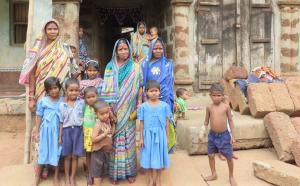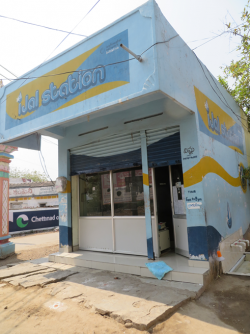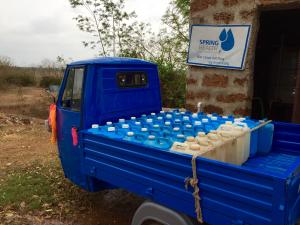In the Safe Water II programme (2015-2018) we map tools and approaches that local businesses in household water treatment products use to start and scale up their business.
Published on: 17/03/2016
 Achieving safe drinking water for everyone forever requires strengthening national, regional and local systems. In the meantime many people are drinking unsafe water today. Around 1.9 billion people are using either an unimproved water source or an improved source that is faecally contaminated, according to the World Health Organization (WHO). For these people, Household Water Treatment and Safe Storage (HWTS) products can be a helpful intermediate solution to prevent illnesses. Diarrhoea as a result of unsafe or insufficient water still leads to half a million deaths a year (WHO, 2014). In many countries it is difficult to tell if the water you are drinking is safe. Even if the water is safe at the point of the utility, this doesn't mean it is also safe at the point of use. In piped systems the water can be polluted through pressure drops and leaks. Also re-contamination from the source to the point of use, for instance by using water vessels that are not clean, can lead to unsafe drinking water.
Achieving safe drinking water for everyone forever requires strengthening national, regional and local systems. In the meantime many people are drinking unsafe water today. Around 1.9 billion people are using either an unimproved water source or an improved source that is faecally contaminated, according to the World Health Organization (WHO). For these people, Household Water Treatment and Safe Storage (HWTS) products can be a helpful intermediate solution to prevent illnesses. Diarrhoea as a result of unsafe or insufficient water still leads to half a million deaths a year (WHO, 2014). In many countries it is difficult to tell if the water you are drinking is safe. Even if the water is safe at the point of the utility, this doesn't mean it is also safe at the point of use. In piped systems the water can be polluted through pressure drops and leaks. Also re-contamination from the source to the point of use, for instance by using water vessels that are not clean, can lead to unsafe drinking water.
About 1.1 billion people are already using some form of HWTS at the moment (WHO, 2014). Boiling is the most commonly used method, but also filtration (in Asia) and chlorination (in Africa and Americas) are increasingly common. The WHO just released the first global assessment of HWT performance, covering only technologies that are low-cost and appropriate for low-income settings. The tested technologies include solar, chemical, filtration and ultraviolet (UV) technologies. The Dutch KWR Watercycle Research Institute (KWR) was one of the two testing laboratories. You can read more about the WHO global assessment online.

Increasing access to safe water is at the heart of Safe Water II programme (2015-2018), in which IRC is involved. In this programme local HWTS businesses reaching people at the base of the pyramid are being analysed and supported. Seven -relatively successful- companies were identified in the first phase of the Safe Water programme. These businesses are located in Nepal (2), India (2), Cambodia, Pakistan and Guinea Conakry. The products they sell include ceramic filters, chlorinated water in jerry cans (in water kiosks and home delivery), and liquid chlorine to purify water at home. How do they reach their customers and how are they scaling up? Are governments stimulating or hindering these businesses in some way? What can other start-up HWTS businesses learn from these companies? These are some of the questions we are looking at in the programme. We are mapping tools and strategies that businesses, governments and other stakeholders are using to develop and support HWTS businesses.
The aim is to compile a Toolbox, which new water entrepreneurs can use to create and scale up their HWTS businesses. Also governments, social investors and NGOs can consult the Toolbox to find strategies to support HWTS businesses. IRC will focus mostly on tools related to the enabling environment, such as government regulations and strategies. The Technology Applicability Framework (TAF) (developed in the WASHTech programme) will for instance be included as a tool that can be used to analyse the enabling environment. The TAF has been applied to TARA, one of the HWTS partner businesses in India. Also specific tools such as carbon credits and micro finance are being analysed and documented.
The Safe Water II programme is financed by the Swiss Agency for Development and Cooperation (SDC) and is led by Antenna. Also FANSA is involved as a partner, focusing mostly on advocacy and human rights. In April 2016, field visits to Nepal and India take place to collect information from the businesses TARA and SpringHealth (India). In May a visit is planned to the company in Cambodia: Hydrologic. So keep an eye out for new blogs about the safe water programme in May and June.

References:
WHO (2014). Preventing diarrhoea through better water, sanitation and hygiene: Exposures and impacts in lowand middle-income countries; and
At IRC we have strong opinions and we value honest and frank discussion, so you won't be surprised to hear that not all the opinions on this site represent our official policy.